Table of contents
The fresh baker’s yeast, Baker's yeast or pressed yeast ( Saccharomyces cerevisiae) is a natural raising agent with a strong leavening power. It is therefore particularly suitable for baked goods with longer fermentation times and several resting phases.
Use in the kitchen:
Fresh baker's yeast originates from top-fermented beer, which is why its Latin name Saccharomyces cerevisiae also comes from brewer's yeast. Fresh yeasts are light, yellowish cubes with a pleasant, sweet smell.
How much fresh yeast do you need for 500 g of flour? One cube of pressed yeast, usually 42 g, is enough for about 1 kg of flour, for 500 g you need half a cube. If you want to reduce the amount of yeast, you can easily compensate for the amount by letting it rise for longer. Can you replace fresh yeast? Fresh yeast can also be replaced with dry yeast. One packet of dry yeast (approx. 7 g) is enough for about 500 g of flour.
Fresh yeast is particularly suitable for pastries made from wheat flour such as Striezel (Stollen, plaited bread, yeast cake), pizza crusts, bread and rolls. Fruit cakes, snails (all other shapes), stick bread, Buchteln, waffles etc. can also be made wonderfully with yeast. Yeast dough also works with spelt flour, but rye flour cannot be "raised" with yeast alone. Rye flour needs acid, for example in the form of lactic acid and acetic acid in the case of sourdough.
Types of yeast and their use:
When it comes to baking, fresh yeast andbaking yeast (active dry yeast) are the main options. While fresh yeast is characterized by a stronger leavening power and is therefore well suited for baking preparations with long rising times (and the associated resting phases), dry yeast scores points for its durability and ease of use (dosage, mixability, etc.).
In addition to being used as a natural baking agent, yeast fungi are also used as a food supplement or seasoning due to their high content of glutamic acid and B vitamins - as is the case with yeast flakes (noble yeast). However, as noble yeast is an inactive form of yeast, it can no longer be used for baking. These fungi can also be found in highly concentrated form and as a spread in the form of yeast-based spice pastes - a very intensely flavored yeast extract made from lysed yeast cells (produced by cell wall destruction).
Brewer's yeast, originally used in beer production, strikes a balance between being a leavening agent, food supplement, cosmetic product and intestinal flora sanitizer - depending on the processing (active, inactivated, etc.) in which it is used or consumed.
Recipe for vegan yeast dough:
Ingredients: 500 g flour (white flour), 1/2 cube of fresh yeast, 250 ml soy milk, 60 g sugar, 1 pinch of salt, 120 g soft margarine, 1 pinch of bourbon vanilla.
Preparation: Sift the flour into a bowl, crumble in the fresh yeast and sprinkle with 1 teaspoon of sugar. Pour in the warmed soy milk. Leave the mixture to stand for about 10 minutes until the yeast starts to bubble. Add the salt, the remaining sugar, the soft margarine and the vanilla to the flour and the pre-dough. You can also melt the margarine together with the soy milk. Knead all the ingredients into a smooth dough using a food processor (dough hook) or by hand. Cover the dough and leave to rise in a warm place until it has doubled in volume. This can take 1-2 hours.
For a yeast plait, you can divide the dough into three equal pieces and shape each into a 50 cm long strand. Place the three strands next to each other and start braiding by placing the right strand over the middle one and then the left strand over the middle one, etc. Now cover the plait and leave it to rest on the baking tray for about 30 minutes. You can brush the yeast plait with plant milk and decorate it with sugar. Bake the baking tray on the middle rack of the preheated oven for about 30 minutes at 160 °C fan.
If you like, you can refine the yeast plait with some grated lemon peel and raisins.
| Not only vegans or vegetarians should read this: Vegans often eat unhealthily. Avoidable nutritional errors. |
Shopping - where to buy?
Fresh baker's yeast is available from all supermarket chains such as Coop, Migros, Denner, Volg, Spar, Aldi, Lidl, Rewe, Edeka, Hofer etc. In well-stocked supermarkets, organic supermarkets, organic shops and health food stores you can also find fresh yeast in organic quality. This is characterized by the fact that the nutrient medium (e.g. molasses, grain, whey) also comes from organic production and must not be genetically modified. Organic yeasts do not require synthetic aids such as nitrogen and phosphorus sources or synthetic vitamins. The only emulsifier permitted is sunflower oil for defoaming. 1 Organic yeasts grow more slowly, the raw material requirement is higher and the yield is lower, which is why they are somewhat more expensive than conventional yeasts. 2
Homemade:
If you don't want to use industrial yeast, you can make wild yeast yourself - or rather cultivate and multiply it. Some people tolerate this yeast better than that from the supermarket. Yeasts are small fungi, i.e. microorganisms: They need nutrients such as sugar, which they convert into carbon dioxide and alcohol. Even though yeasts are living organisms, they are considered vegan foods because they do not have a central nervous system. The yeast strain most commonly used in nutrition , Saccharomyces cerevisiae, is found in many types of fruit. Dried fruit is therefore an ideal breeding ground for starting your own yeast culture.
It is important to use unsulphured fruits, such as plums, dates or apricots. You also need 1 tablespoon of sugar and 500 ml of lukewarm water. A narrow, tall glass is ideal as a container (e.g. a screw-top jar) to keep the water surface to a minimum for any unwanted bacteria. Shake the water and sugar vigorously in the closed jar so that the sugar dissolves. Then add 2 dates (or other dried fruit) to the water. Leave the whole thing in a warm place at around 25-35 °C and shake the yeast water vigorously once every morning and every evening. It is important to open the container afterwards so that the excess gases can escape.
The yeast is ready after about 5-10 days. You can tell this by the typical yeasty smell, the cream-colored yeast that has settled on the bottom and the bubbles that have formed in the water. The white streaks in the glass are from the softened dried fruit and are not mold. However, if mold is clearly forming, the yeast water should be thrown away immediately.
Homemade yeast is ideal for recipes that require a pre-dough. The longer and more frequent rising times (eg yeast plaited bread) give the wild yeast enough time to rise. The well-shaken yeast water is used instead of the liquid in the recipe. The dried fruit should be discarded.
To multiply the yeast again, leave 150-200 ml of yeast water in the container, add 2 fresh dried fruits and 1 tablespoon of sugar and fill it up again with lukewarm water. Now the yeast only needs 2-3 days after shaking and opening twice a day.
If you don't want to multiply them again immediately, you can store the remaining 200 ml of yeast water in the fridge for 1-2 weeks. The cool temperatures slow down the fermentation process. If mold appears or the yeast water smells bad, it can no longer be used! 3
Storage:
The shelf life of fresh baking yeast (pressed yeast) is more limited than that of dry yeast due to the significantly higher water content. At refrigerator temperature, i.e. at 2-8 °C, fresh yeast lasts for about 10-12 days. The vital function of yeast is ensured by a permanent breakdown of carbohydrate reserves and protein. The leavening power decreases the more dead cells are contained in a piece of yeast.
Yeast can also be easily frozen, which can extend its shelf life considerably.
Ingredients - nutritional value - calories:
Fresh baker's yeast contains approx. 105 kcal per 100 g. The fat content is approx. 2%, protein 8.4% and carbohydrates 18%. The water content can be up to 69%.
Folic acid is present in abundance at 785 µg per 100 g. A fresh yeast cube (42 g) therefore contains around 330 µg of folic acid, which is roughly equivalent to the daily requirement (300 µg). Active dry yeast has a multiple of this due to its low water content at 2340 µg/100g. 4 Folic acid occurs naturally as a precursor (folate), which is water-soluble and sensitive to oxygen, light and heat. Pulses are good sources of folic acid, although cooking significantly reduces the content, such as mung beans (raw: 625 µg/100g, cooked: 159), chickpeas (raw: 557, cooked : 63), lentils (raw: 479, cooked : 181). Folic acid is important for the development of the central nervous system. Pregnant women should increase their intake significantly before pregnancy (requirement 550 µg). 5
Yeast also contains valuable vitamin B: The water-soluble thiamine (vitamin B1) is important for energy metabolism and the nervous system. With 1.9 mg/100g, fresh yeast provides a similar amount to wheat germ (1.88 mg) or sunflower seeds (1.5 mg). Fine yeast (yeast flakes) has very high values of 41 mg/100g, 1 tablespoon of yeast flakes contains approx. 1.2 mg of thiamine. 4
Fresh yeast also contains vitamin B5 (pantothenic acid), an important vitamin for metabolism, at 4.9 mg/100g. Vegetables, whole grains, pseudo grains and pulses are also good sources of this B vitamin. Avocados contain around 1.5 mg/100g, as do rye and amaranth. 4
The B vitamins riboflavin (vitamin B2) and niacin (vitamin B3) contained in fresh yeast also contribute to a healthy metabolism.
Fresh yeast also contains 10 mg/100g of zinc. This means that one cube of yeast covers around 40% of the daily requirement. Hemp seeds and hare beans have similar values for this trace element. Zinc is involved in many enzyme reactions and is important for wound healing, vision and the immune system, among other things. 4
Yeast also contains phosphorus and essential amino acids. However, you have to be aware that you only consume yeast in small quantities and that processing it usually involves a longer baking process.
Dangers - intolerances - side effects:
With conventional yeast you can be sure that it is gluten-free because it is grown on molasses. Organic yeast, on the other hand, is usually grown on grain mash (oats, brewer's yeast) and the question therefore arises as to whether it contains gluten. It is normally gluten-free, but celiac patients are advised to avoid this yeast. A declaration of gluten, whether as an ingredient or excipient, is necessary here. 6
Pastries made from wheat or rye often cause irritable bowel problems. A study by the University of Hohenheim shows that the cause of flatulence and stomach pain lies in the short-chain carbohydrates and sugar alcohols they contain. Although ancient grains such as spelt, emmer, einkorn and durum wheat also contain such FODMAPs ( fermentable oligosaccharides, disaccharides, monosaccharides and ( and) polyols), patients tolerate them better. The reason for this lies in the method of preparation. Longer rising times (approx. 4 hours) reduce the FODMAP content and make bread and pastries (including those made from wheat or rye) easier to tolerate. 7
Even though yeast allergies are very rare, they do exist. The cause is the protein contained in yeast. The symptoms are similar to those of other food allergies, e.g. swelling, stomach problems, nausea, vomiting, diarrhea, skin diseases, etc.
Occurrence - Origin:
Written evidence of the use and production of yeast can be found in the Naturalis historia by Gaius Plinius Secundus from around 77 AD. 8 In the Middle Ages, the job of a yeast maker was to care for and multiply yeast during brewing breaks. 9 The top-fermenting yeast from the breweries was then used by bakers to make sweet-fermented breads (e.g. Kaisersemmel). After many breweries switched to bottom-fermented beers in the middle of the 19th century, industrial production of baking yeast developed outside of the breweries. The "Vienna process" ("Vienna skimming process") of Mautner Markhof AG laid the foundation for this in 1845.
Production:
Industrial baker's yeast production requires two essential ingredients as a basis: a yeast strain (pure yeast) and a culture medium (molasses, grain whey). In biotechnology, multi-stage culture processes are usually used. The culture medium is an aqueous solution of 8-10%. Molasses (waste products from sugar beet production) has around 50% sugar. In conventional production, the pH value is lowered to 4.5 using acids and the whole thing is filtered. Nutrient salts (ammonium salts and phosphates) and vitamins from the B group are added because this facilitates yeast growth. The microorganisms work aerobically, which means that the cultures require oxygen (supplied with the help of ventilation). Pure culture requires that the culture facilities are sterile. The first four stages, i.e. up to around 40 liters, take around 8 days. In about 11 days, you can produce yeast mass that is almost 10 billion times larger from an initial mass of 8 mg with about 33 doublings. The mass (yeast milk, yeast cream) is concentrated using separators and then processed further, depending on the desired result. 10
According to Wikipedia, to produce compressed yeast, yeast milk is concentrated using filter presses or vacuum rotary filters to a dry matter content of around 30%. The mass is formed using an extruder and packaged. 1 g of compressed yeast contains around 10 billion yeast cells. 10
General information:
The scientific name for brewer's yeast - Saccharomyces cerevisiae - comes from Latin and refers to top-fermenting brewer's yeast. In the 18th century, bakers received top-fermenting brewer's yeast from breweries so that they could make finer baked goods. Bottom-fermenting brewer's yeast, however, is not suitable for making bread. 10 The name yeast originally comes from Heberin.
Alternative names:
In addition to the names mentioned above, the terms Barme, Gest or Blockhefe are also known for fresh yeast.
In English, fresh, active yeast is called budding yeast, baker's yeast; compressed means pressed yeast. Leavening agents (raising agents) is a general term for leavening agents and baking agents, but is also used in connection with yeast.
Keywords for use:
Saccharomyces is also used today in the production of ethanol fuel and cellulose ethanol. Baker's yeast is used to remove heavy metals (zinc, copper, cadmium, uranium, etc.) from waste water (biosorption). 11
Literature - Sources:
Bibliography - 11 Sources
| 1. | Pini U. Das Bio-Food Handbuch. Ullmann: Hamburg, Potsdam. 2014. |
| 2. | Martin HH, Dittrich K. Worin entscheiden sich konventionelle und Biohefe? UGB.de Vereine für Unabhängige Gesundheitsberatung. 2014. |
| 3. | Thiele P. Hefe selber machen: Wilde Hefe ansetzen und vermehren. Utopia.de 2020. |
| 4. | USDA United States Department of Agriculture. |
| 5. | DGE Deutsche Gesellschaft für Ernährung. |
| 6. | Schaer.com FAQ Worin besteht der Unterschied zwischen Trocken- und frischer Hefe, natürlicher Hefe und Backpulver? |
| 7. | Ziegler JU, Steiner D et al. Wheat and the irritable bowel syndrome – FODMAP levels of modern and ancient species and their retention during bread making. Journal of Functional Foods. 2016;25. |
| 8. | Nelson M. Beer in Greco-Roman Antiquity. 2001. |
| 9. | Meussdoerffer F, Zarnkow M. Das Bier: Eine Geschichte von Hopfen und Malz. C.H. Beck Verlag. 2014. |
| 10. | Wikipedia Backhefe. |
| 11. | Volesky B, May-Phillips HA. Biosorption of heavy metals by Saccharomyces cerevisiae. Applied Microbiology and Biotechnology. 1995;42(5). |

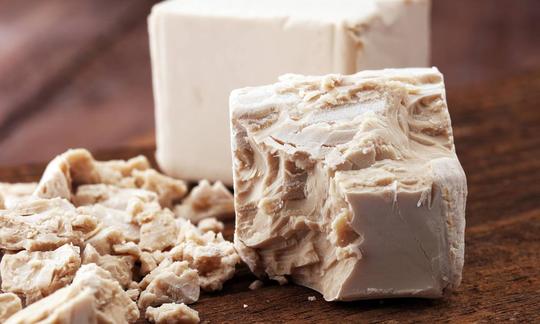

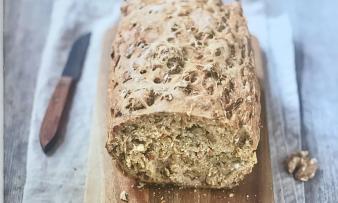
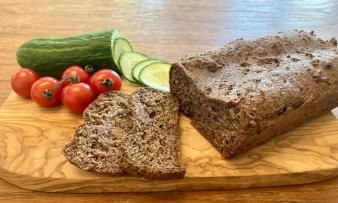

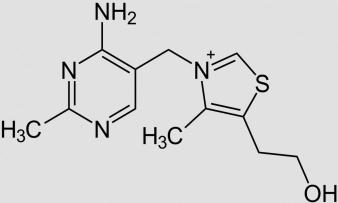
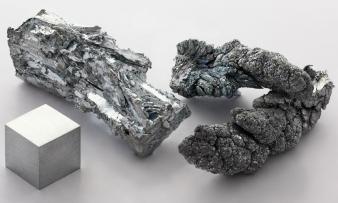


Comments